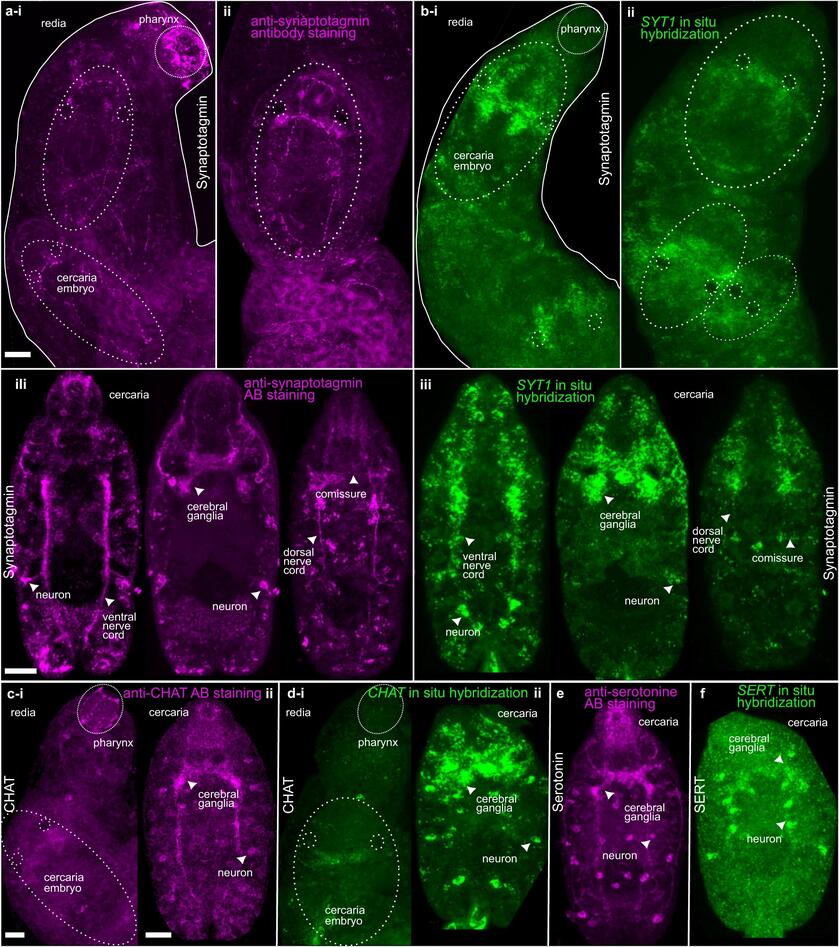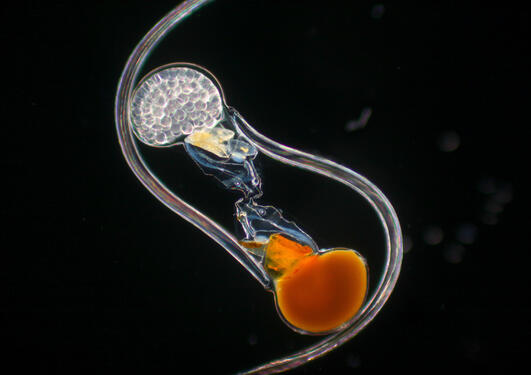A first look at the plastic nervous system of a cod parasite
Parasitic flatworms undergo drastic changes throughout their life cycle, including a rewiring of their nervous systems. A new paper explores the molecular mechanisms underlying this remarkable feature.

Main content
Trematodes, commonly known as flukes, are a group of parasitic flatworms affecting humans and a diversity of other animal species. Their lifecycle is extremely complex and includes remarkable transformations to their physiology and behavior that remain poorly understood on the molecular level. In a new paper published in Communications Biology, researcher Oleg Tolstenkov, and group leader Marios Chatzigeorgiou from the Michael Sars Centre collaborating with Alexander Gorbushin from the Sechenov Institute of Evolutionary Physiology and Biochemistry in Saint Petersburg, conducted the first transcriptomic and behavioral analysis of the marine trematode Cryptocotyle lingua.
When he joined the group of Marios Chatzigeorgiou, first author Oleg Toltsenkov brought with him a side project aimed at characterizing the transcriptome of Cryptocotyle at various life stages. The parasite possesses a miniaturized nervous system known to be remodeled as it transfers from one host to the next, adjusting to the range of tasks that it needs to perform in each life stage. Oleg was eager to understand the underlying mechanisms of this fascinating ability. “I have a background as a vet, and it was my dream to fuse parasitology with neuroscience, which is not normally done properly”, he explained. “So this is one step closer to my dream.”
From sea snails to cod, Cryptocotyle infests species living in very different environments, and transitioning between hosts requires a very specialized set of behaviors. Using behavioral setups and analysis tools built in the Chatzigeorgiou group to study tunicate behavior, the team was able to observe the impressive range of complex maneuvers performed by the flatworm. This suggests that their simple nervous system can optimize locomotion as they search for a host. “Both Cryptocotyle lingua and Ciona are fascinating organisms using miniaturized nervous systems to sense their environment and locomote”, said Marios Chatzigeorgiou. “What really impressed me in Oleg is his ability to successfully combine his passion in parasitology with our lab's interest and expertise in systems neuroscience.”
What really impressed me in Oleg is his ability to successfully combine his passion in parasitology with our lab's interest and expertise in systems neuroscience.
- Marios Chatzigeorgiou
Beyond changes to its behavior, transcriptomic data showed that Cryptocotyle can change the expression levels and patterns of key signaling molecules such as neurotransmitters throughout its life cycle. The team discovered that its streamlined molecular toolkit lacks nitric oxide synthases, a key enzyme family responsible for synthesizing the gaseous neurotransmitter. “Parasites lost many common pathways, maybe because they’re parasites or maybe they became parasites because they lost this pathway. What predates what is the question!”, explained Oleg, highlighting the evolutionary relevance of the work.
Understanding the life cycle and physiology of the parasite can have significant implications for the fish farming industry. Cryptocotyle commonly infests farmed cod, leaving the fish covered in black dots that make it unappealing to customers. By shedding light on the nervous system of this animal, the study paves the way for developing targeted antiparasitic strategies and establishing a new trematode model species.


